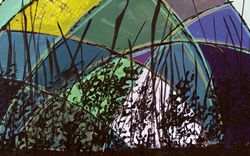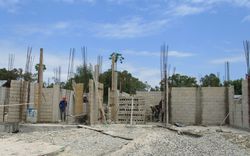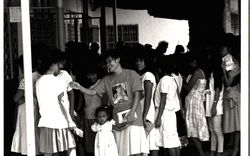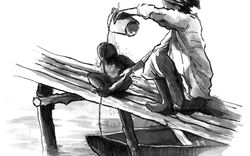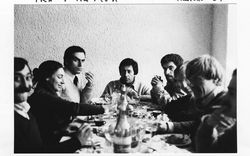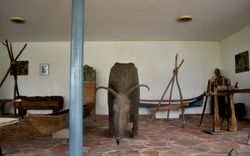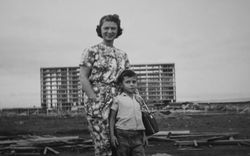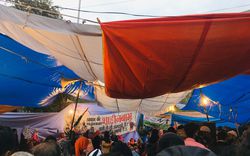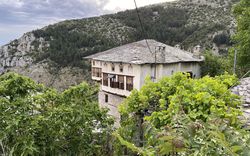Many Stories to Tell: Women in the Construction of Brasília
Tânia Fontenele uncovers the memories of fifty women who experienced life in the city's early phase
At the beginning of Brasília, there were few women, but we were worth a thousand. We did everything. It was a challenge to live without water and light, in a city all under construction. It was worth so much sacrifice to see the birth of the new capital of Brazil. Too bad we are not remembered…
—Maria Luíza Mendes (2010), arrived in Brasília in 19591
-
Testimony by Maria Luiza Mendes (a midwife/cook who arrived in Brasília in 1959) in Dust and Lipstick - 50 women in the construction of Brasília/, directed by Tânia Fontenele, 2010, 58 min. ↩
The construction of the new capital of Brazil, Brasília, was marked by the exaltation of the performance of President Juscelino Kubitschek (JK), the architects Oscar Niemeyer, Lúcio Costa, and Burle Marx, and the candangos (construction workers), all men. Rarely have women been remembered or mentioned at this historic moment. Our documentary film project, titled Dust and Lipstick, began with the intention to interview fifty women who arrived in the early days of the city, between 1956 and 1960, recovering their memories while they were still alive. These women came from different social classes and cultural contexts, including migrants from different Brazilian regions as well as other countries (Japan, Syria, Spain, and Germany). They worked in various trades, as laundresses, teachers, cooks, sex workers, engineers, midwives, construction office administrators, and housewives, among other professions. They laboured in precarious conditions, and lived in wooden houses or improvised camps, often without water and light. By evoking the memories of the pioneering women who arrived for the construction of Brasília, we intend to contribute to reversing the historiographic silence practiced on the feminine role in the initial phase of the city. Their testimonies help to compose the image of the everyday life of those who collaborated in the construction of Brasília.
This project began with many questions. Why, in publications about Brasília, have women never been mentioned? How were the women who arrived in these “distant and dusty lands” of the Brazilian Central Plateau perceived? What would it be like to portray the history of Brasília from the women’s point of view? What would a woman’s life be like in a city under construction? What were the greatest difficulties faced? Did the fact of “being a woman,” in a city where the majority of the population was composed of working men who came in the thousands to build the new capital, impact their daily lives?
Women’s accounts of the discomfort and precariousness of life in this early phase of the city are often evoked in the interviews. Architect Helena Maria Viveiros de Sousa Carvalho, merchant Salam Kouzak, teacher Teresinha Carvalho, and merchant Marta Cintra narrate their memories when they arrived in the Free City1:
-
Name given to the first temporary city created to receive construction workers in Brasília. ↩
I arrived in 1958, there was almost nothing in the Free City. I saw that clearing, small wooden houses, a lot of dust. It was love at first sight. After a Jeep ride from Rio to Brasilia, it took us 10 days to arrive, we walked along roads that weren’t even built, we often had to cut down trees in the middle of the way. We went through many dangers. When we arrived in Goiânia nobody believed that we had come from so far away.
—Helena M.V.S. Carvalho, architect, 2010
In the city everything was missing, there was no water or light, there was almost no asphalt, it smelled of tar in some areas and the NOVACAP huts were all painted blue.
—Teresinha Carvalho, laundress, 2010
Who speaks badly of the beginning of Brasilia, knows nothing, and shows a lot of prejudice. There was a lot of respect and solidarity, despite all the precariousness. I felt I was collaborating for the construction of a better Brazil and I was not afraid of anything.
—Salam Kouzak, merchant, 2010
In the Free City, everything was very simple, red dust everywhere. I walked quietly through the works, I didn’t listen to jokes, nothing! She would hitchhike without fear, she was like one of the drivers’ family. I miss this time of the beginning of Brasília. A lot of idealism, a utopia that we were helping to realize. Brasília was beautiful in the middle of the construction dust. Modern, different from everything we saw in Brazil.
—Marta Cintra, teacher, 2010
Through their memories, these women narrate the genesis of Brasília in the late 1950s and early 1960s. They recall the day-to-day life of the first improvised dwellings in the construction companies’ sites or the cities that were created close to the construction works of Brasília. They use many terms in their narratives that offer insight into the realities of the city’s early days: “new life,” “dreams come true,” “few women,” “dust,” “everything is missing,” “emptiness,” “solidarity saved me,” “self-denial,” “suffering does not kill,” “courage to win,” “loneliness,” “communion of all,” “hope,” “mutual help,” “Brasília the capital of hope.”
Dust and Lipstick presents, in its fifty-eight minutes, a new and feminine look at the history of the new Brazilian capital city. The film represents a shift in the way we look at the history of Brasília by showing women’s impressive testimonies about a time when everything was yet to be built. It was a time of dust and solidarity, when idealism helped to build an entire new city in the center of Brazil.
Interviews from the film Dust and Lipstick were given to Tânia Fontenele in Brasília, 2010. Interviewees featured in this article include Helena Maria Viveiros de Sousa, Marta Cintra, Salam Kouzak, Maria Luíza Mendes, and Teresinha Carvalho.
